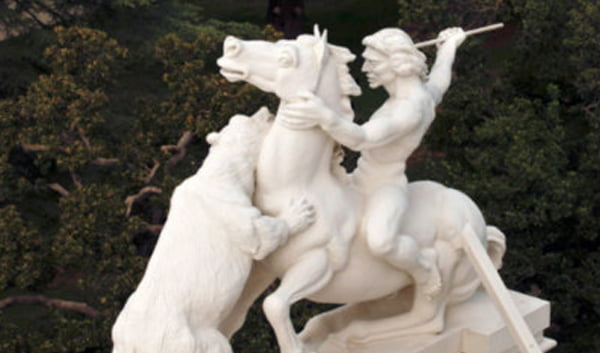Current Exhibit
Permanent Collections
Past Exhibits
Current Exhibit
Lasting Impressions: Early Photography in California
The new field of photography (from the Greek phos – “light” and graphe – “drawing”) came of age at the same time as California. From the obscure to the famous, nineteenth-century California photographers made major contributions to their field. In the process, they also won international awards and made revolutionary advancements in photography – e. g., early motion pictures.
This exhibit opened April 2024 in the Capitol.
Permanent Collections

Historic Rooms
The Capitol’s Historic Rooms have been preserved to bring the rich history of past eras to life for patrons who visit the Capitol.

Capitol Park
Special points of interest, memorials, and monuments are tastefully incorporated into Capitol Park to remind us of California’s history and natural beauty.

Portraits
The commissioning of portraits of former governors began in 1879. These portraits are on display all throughout the Capitol, along with Washington and Lincoln portraits in the Senate and Assembly, respectively.

Statues
Today, only the statuary on the west front pediment tympanum (the recessed space enclosed by the triangular pediment) is original. These statues reflect the Capitol’s roots in Greek architecture. In Grecian times, statuary was considered part of the building, not as mere decoration.
Past Exhibits

Iconic California: State Symbols that Represent California
The full scope of California’s state symbols is as remarkable as the state itself. Over the last 150 years, Californians have selected for themselves various symbols – ranging from plant species to marine life, from songs to nicknames, from ghost towns to memorials – to represent what is most remarkable about their state.

Building a Legacy: 150 Years of the California State Capitol
Finding a permanent home for the capital was crucial for Californians in order to solidify the state’s stability in the nation. Over the past 150 years, both the location of the “seat of government” and the design of the structure were constantly in flux.

The Road Ahead: The Automobiles Impact on California
Since 1898, the automobile has helped to shape and define the California way of life, creating what has been called the world’s first “auto-civilization.”

Out of the Vault: Treasures from Your California State Library
From the beginning of recorded history, libraries have served as the constant companion of civilization. The California State Library has made important contributions to the Golden State’s own, unique civilization.

Called to Action: California’s Role in WWII
World War II brought monumental changes to the Golden State, change as had not been seen since 1848. After the Gold Rush, the next most transformative event in California’s history was “the War.”

California Invites the World: 1915 Panama Pacific International Exposition
The late nineteenth and early twentieth centuries were the golden age for the great world’s fair expositions. The 1915 Panama-Pacific International Exposition was no exception.

The Dust Bowl, California, and the Politics of Hard Times
This exhibit examined the cultural, social, and political impact the Dust Bowl migrants had on California.

Thomas Starr King
This exhibit examined the life, legacy and impact that Thomas Starr King had on California.


